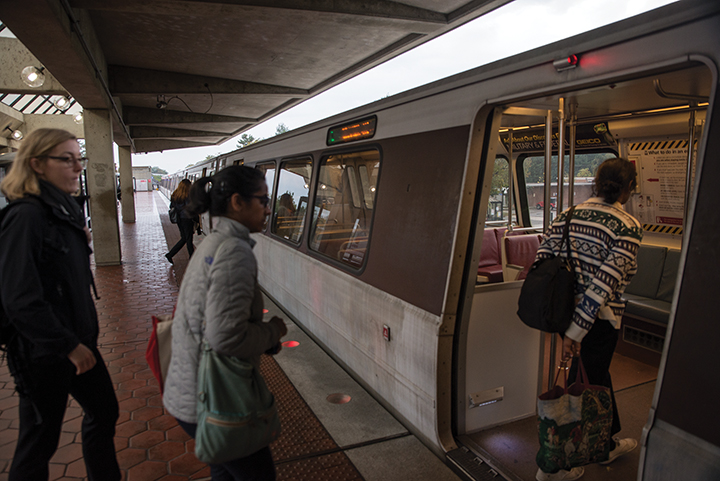Views expressed in opinion columns are the author’s own.
The RHA Senate passed a resolution on Feb. 28 to give on-campus residents an unlimited metro pass for an additional student fee. To be clear, I am a proponent for sustainable public transportation and firmly believe we must move toward a car-free society as fast as possible. However, the mandatory metro fee is a very bad proposal.
Public health, sustainability and stronger communities come alongside increased access to public transportation. A subsidy that would allow students access to more transportation is a great idea that would have my full support, but the resolution passed Feb. 28 is not a subsidy by any means. Matt O’Brien, the RHA Transportation Advisory Committee chair who presented Tuesday’s resolution said, “when you come to college, you pay into a socialistic society … you are helping someone else ride the Metro, and it’s not like you’re not getting anything out of it.”
In reality, a lot of people would get nothing out of it, and nothing about this is even socialism — it’s just a bad deal. By proposing a 129 percent increase in transportation-related student fees, the RHA is forcing on-campus residents to pay for something they will likely not use. Yes, student fees do and should subsidize things at Maryland that one might not personally use so the whole campus can access them — this facilitates learning and personal growth outside of the classroom.
But when a 129 percent increase in transportation-related student fees goes straight to the DMV’s transportation system? That’s not the same as funding Shuttle-UM, or Student Entertainment Events or school athletics through student fees. That’s an entirely different conversation, and one we must examine very critically.
If this resolution comes to fruition and DOTS negotiates with WMATA an agreement similar to American University’s program, what will that mean for us?
For starters, twice a year for each 16-week semester, each resident will pay $130 in exchange for unlimited WMATA services, namely, MetroBus and MetroRail. This does not include other local transit services such as Route 1 Ride provided by Prince George’s County, or other local bus services like TheBus or Ride On. The expected Purple Line that is planned to run straight through campus from New Carrollton to Bethesda will be operated by MTA — another transit agency that this “unlimited” service might not cover. Additionally, the program would only be in effect during the major school semesters, meaning students would still have to pay for metro service during the winters or summers.
When was the last time you spent $130 on metro fares in one semester? Probably only when (or if) you had an internship, right? But how likely is it for you to have an internship that requires consistent Metro use every semester you live in a dorm? A resident student must spend $130 every semester on WMATA-run transit services to just break even on this deal, a deal that does not make sense for Maryland students.
Let’s be clear — this is not a subsidy. If it were, it might matter how many people pay in to the program. Under the U-Pass Program that American University piloted with WMATA, there is no per capita price decrease contingent upon the number of SmarTrips paid for by the University. It’s $130 a semester, per person, flat.
So to all the students who lived in dorms for their freshman and sophomore years, let me ask you: did you spend $520 during those four semesters on the Metro?
At the end of the day, WMATA is going to make millions of dollars a year off this deal at the expense of Maryland students, many who might have student debt. Sustainability and quality transportation access is crucial for the communities of tomorrow, and I believe the RHA can play a role here, but the current proposal as it stands is a waste of resources. WMATA needs more dedicated sources of funding, but not at the expense of Maryland students.
Cole McCarren is a senior geographical sciences major. He can be reached at colemccarren@gmail.com.



